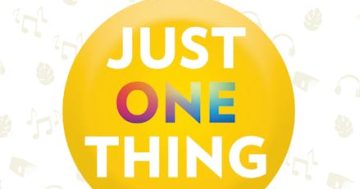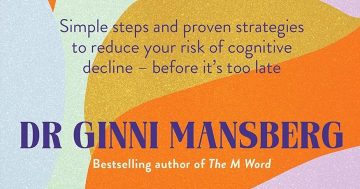In a world overloaded with information, much of it questionable, Michelle Gibbings suggests a way to focus on what really matters to you.
 When I go into a bookstore, I rarely leave without a few purchases, and my Kindle is full of books I am waiting to read.
When I go into a bookstore, I rarely leave without a few purchases, and my Kindle is full of books I am waiting to read.
As you can appreciate (also given my work), I love learning.
The catch is that we live in a world of abundance — an abundance of ideas, data and information. There is so much available that we can be overwhelmed.
What do I need to remember? What can I exclude? Where do I need to direct my attention?
As the noted economist and Nobel Prize winner, Herbert Simon said, we live in a world with a wealth of information, which is creating a poverty of attention.
We often don’t know where to focus our attention, and when our information gathering is scattered, it can lead to a paucity of insights.
That’s where the concept of a ‘learning mantra’ comes into play — understanding and embracing your learning mantra can significantly transform how you acquire knowledge, skills and expertise.
If you’ve ever participated in a yoga or meditation session, you will likely have repeated a mantra.
A mantra is a word, phrase, or sound from ancient traditions such as Hinduism, Buddhism, and Jainism. It is a tool or instrument of the mind.
When used with intention and sincerity, mantras can impact how you focus, help cultivate positive emotions, connect you with your deeper self and create a sense of inner peace.
They are also helpful with learning. Think of it like the inner voice or messages you repeat to yourself about how and what you learn.
You then support that mantra with learning systems and processes.
This way, your learning mantra becomes the beliefs, principles, and strategies that resonate with your individual learning style and preferences.
It’s the mindset and techniques you adopt to absorb, process and apply information effectively.
Discovering your learning mantra involves reflecting on past learning experiences to identify what’s worked and the techniques that have yielded the best results.
Ask yourself questions like: How do I prefer to learn? Do I learn best through visual aids, hands-on experiences, or verbal explanations?
What environment allows me to concentrate and absorb information most effectively? Am I more inclined towards independent study or collaborative learning?
What motivates and engages me during the learning process? What are my preferred methods for organising and processing information?
As part of this process, you want to examine your learning diet.
Do you spend much of your time consuming meaningless TV or perhaps trashy novels (i.e. the equivalent of a ‘junk food’ learning diet)?
Or do you seek a broad range of learning with a mixture of entertaining, informative and challenging sources (i.e. the equivalent of a ‘whole food’ learning diet)?
Is your appetite for learning limited, so you do the bare minimum, or are you always hungry and eager to know more?
Crucial to this process is taking a curious approach to learning.
When setting up your learning approach, look beyond the obvious and familiar sources — the ones you always go to.
Seek out sources and information outside your industry or profession because that is often where the real gems are, and it is on the fringes that change is happening.
Dig deeply into information that you are curious about. Wonder why it is so. Ask lots of questions.
It helps to set up a routine where you read daily. When it becomes a daily habit, you are far more able to consume and digest information.
As part of this, establish a knowledge diet that is expansive and full of books, journals, talks, podcasts, and whatever else you fancy to build your insights.
When it comes to learning, context matters. Sometimes ideas won’t resonate because we aren’t ready to hear the message.
It is essential to challenge yourself, which means listening and reading material from people you don’t agree with.
If you only seek information from people you agree with, your ideas will never be challenged and tested.
The wonderful thing about life is that you can learn something new every day, but you need to create space and opportunity for that to happen.
Carve out space and find quiet time.
Novelist, Jeanette Winterson explains why night time and darkness are so powerful for tapping into our emotions and creativity.
She writes: “I have noticed that when all the lights are on, people tend to talk about what they are doing — their outer lives.
“Sitting round in candlelight or firelight, people start to talk about how they are feeling — their inner lives.
“They speak subjectively, they argue less, there are longer pauses. To sit alone without any electric light is curiously creative.”
Consider what you need to alter or shift in your environment to make that environment more conducive to learning.
Seek out the corners, spaces and lightness (or darkness) that work for you, whether it’s a quiet corner at home, a bustling coffee shop, or a well-organised digital workspace.
Hold close to the words of the famous American jurist, Oliver Wendell Holmes: “A mind once stretched will never go back to its original dimension.”
So, what will your learning mantra be?
*Michelle Gibbings is a Melbourne-based change leadership and career expert and founder of Change Meridian. She works with global leaders and teams to help them get fit for the future of work. She can be contacted at [email protected].
This article first appeared at https://www.changemeridian.com.au/latest-news/.











